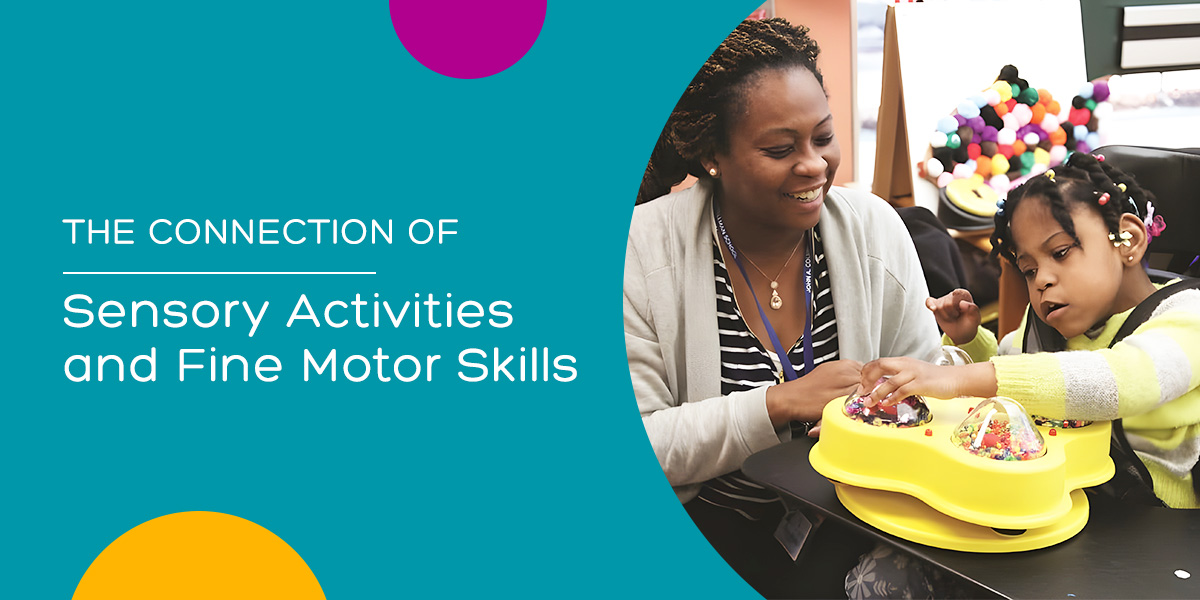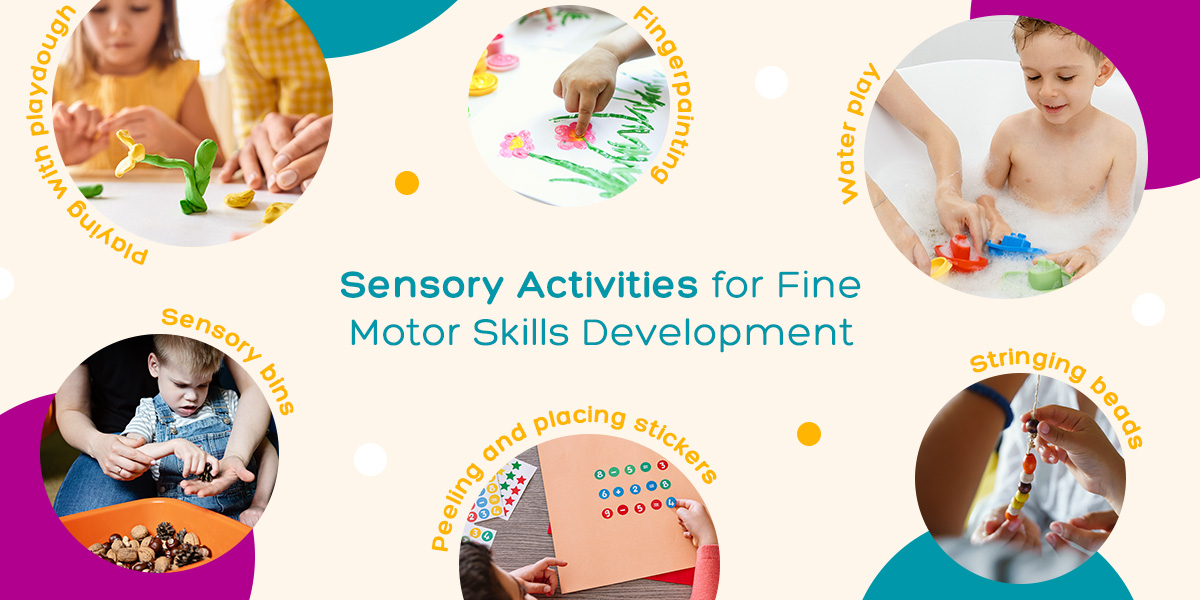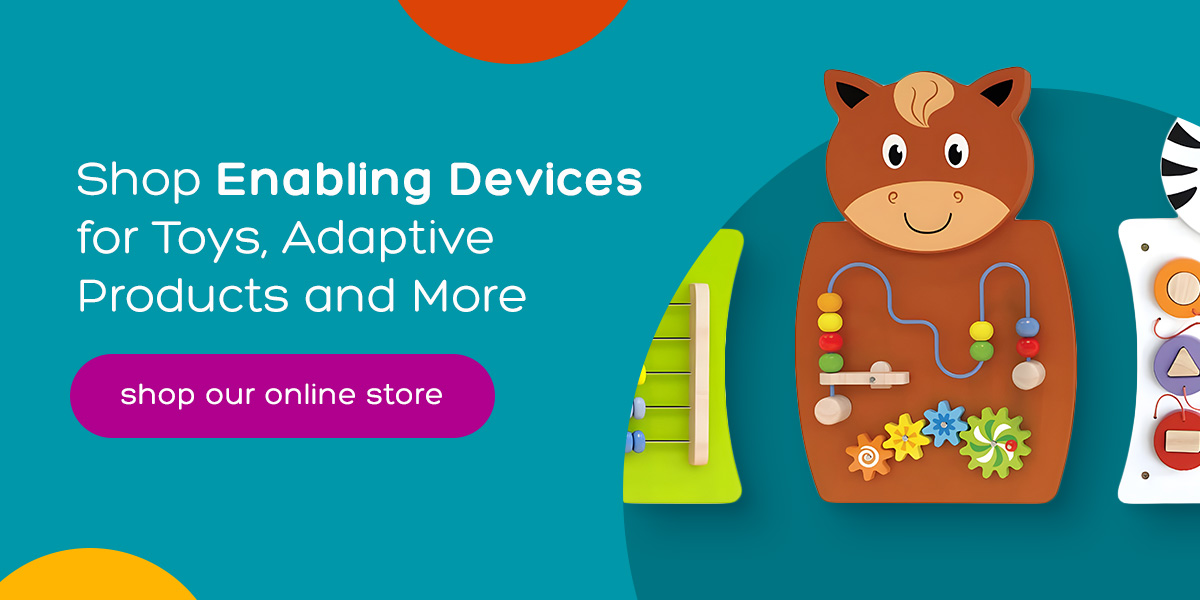Fine motor skills are the coordination of small muscle movements — usually those made by the fingers and hands — with the eyes. These skills are necessary for activities like buttoning a shirt and holding a pencil. Children develop these skills through play activities, and their abilities increase over time. Some children with Autism Spectrum Disorder (ASD), Cerebral Palsy, or fine motor skills disabilities have difficulty doing things that require these skills, like holding objects or stacking toys.
Stimulating sensory activities can enhance the development of fine motor skills in children by increasing their engagement in play and providing opportunities for practice. Fine motor skills toys that provide sensory experiences can also help develop these skills.
The Sensory-Motor Connection
The primary senses are vision, auditory, tactile, olfactory and gustatory. Sensory stimulation happens when these senses are aroused or invigorated. Sensory play is activities that engage these senses, offering numerous benefits, including the development of fine motor skills.
Sensory activities also stimulate the following two sensory systems:
- Proprioceptive system: The awareness of your body to know where body parts are and how much force to use when manipulating objects.
- Vestibular system: Maintain balance while engaging in activities.
Sensory activities encourage different motions like mixing, pouring and building. These actions build new nerve connections in the brain, and this brain development allows children to complete complex tasks and learn about their environment.
How to Improve Fine Motor Skills Through Sensory Activities
Sensory play is one of the many ways children with ASD or fine motor skills disabilities can develop their fine motor skills:
- Mobility and stability pattern: Activities like pouring and mixing encourage them to use their dominant and nondominant hands.
- Grasp patterns: Sensory activities allow kids to use hand patterns like lateral grasp, three-jaw chuck, pincer grasps, grasp and palmar.
- Hand awareness: Children can explore textures and learn the differences between oily, grainy, slimy and fluffy surfaces. As children feel these textures, their hand and finger muscles develop.
- Proprioception: Children can learn how much pressure is needed to manipulate objects and get feedback about the pressure they’re applying to an object.
- Visual-motor coordination: Actions like mixing, pouring and dipping help children make the connection between their body movements and sense of vision.
As children play with fine motor skills toys, they learn how to use small muscle groups and coordinate movements. This development during playtime carries over to activities of daily life, so kids can become more independent and have confidence doing things like:
- Zipping a coat
- Buttoning and unbuttoning a shirt
- Writing with a pencil
- Coloring a picture
- Brushing their hair
- Picking up food and bringing it to the mouth
- Holding a book and turning the pages
Keeping Kids Engaged for Skill Development
Engagement and concentration are critical in helping your child or student learn fine motor skills. They need support and time to practice and learn these skills. Sensory activities capture your child’s attention by stimulating the senses and encouraging play. Being engaged for longer periods increases their learning and development, helping them increase their fine motor abilities. The variety and stimulation of sensory play also reduces boredom and frustration and encourages your child to succeed.
Examples of Sensory Activities for Fine Motor Skills Development
Parents and teachers can use a variety of sensory activities to develop fine motor skills at home or in the classroom. Some ideas include:
- Playing with playdough or clay: Your child or student will have fun squeezing and sculpting playdough. As they play, they’re developing strength in their hands and fingers.
- Fingerpainting: Fingerpainting is a fun sensory experience that allows children to feel the texture of paint and express themselves through art.
- Water play: Splashing and playing with water in a bowl or during bath time stimulates the sense of touch. Bubbles can also increase visual tracking and encourage grasp patterns as they poke and pinch them.
- Stringing beads: Feeding string through beads requires children to use both hands to hold the string and place the beads. This activity improves visual-motor coordination.
- Peeling and placing stickers: Peeling a sticker helps children develop their pincer grasp and use visual-motor coordination to place the sticker on a surface.
- Sensory bins: Fill a container with objects of various textures, like pom poms, cotton balls and buttons, so your child can explore different textures.
Tips for Adding Fine Motor Skills Sensory Activities to Your Routine
Children with fine motor skills disabilities can practice grasping, eye-hand coordination and other skills during activities of daily living as well as playtime. Here are some tips for building fine motor skills through sensory activities:
- Add more senses to playtime: Amplify your child’s sensory experiences — and fine motor skills development — by engaging as many senses as you can when playing. For example, they can sit on a pillow to engage their vestibular system while playing with blocks, which is helping them practice grasping and movement.
- Keep sensory experiences engaging: Mix up your typical activities to stimulate different senses. Give them different toys with unique textures and introduce them to a range of sensory experiences to keep sensory play interesting.
- Participate with your child: When you create a supportive and encouraging environment for your child or student, they can develop more than their fine motor skills. Sensory play with a parent or teacher improves communication and helps them practice taking turns.
Fine Motor Skills Toys for Playtime
Enabling Devices has a wide selection of toys designed to develop fine motor skills. These sensory toys have various activities, colors and textures to engage children in play. Actions like moving beads, pulling levers and fitting shapes into cutouts help them practice different fine motor skills, so kids can develop these abilities while playing.
Some of our sensory toys that enhance fine motor skills include:
- Therapeutic Balls Kit: The Therapeutic Balls Kit includes several balls with different textures to provide a tactile sensory experience while strengthening hands and fingers.
- Activity Wall Panels: The Activity Wall Panels have a variety of activities, like an abacus, maze, cog system and geometric shapes to improve motor skills while engaging kids in play.
- Sensory LED Bubble Tubes: The Sensory LED Bubble Tubes have floating bubbles and several color and lighting options. This sensory toy stimulates the senses while encouraging reaching and pointing.
Shop Enabling Devices for Toys, Adaptive Products and More
Since 1978, Enabling Devices has created sensory products and adaptive devices for people with disabilities. Browse our online store for sensory toys that help develop fine motor skills. You can also learn more about activities for fine motor skills and ask questions about our products by contacting our team today.
Linked Sources:
- https://enablingdevices.com/product-tag/strengthening-hands-fingers/
- https://enablingdevices.com/product-tag/increasing-tracking/
- https://enablingdevices.com/product-tag/developing-fine-motor-skills/
- https://enablingdevices.com/product-category/sensory/
- https://enablingdevices.com/product/therapeutic-balls-2/
- https://enablingdevices.com/product/activity-wall-panels/
- https://enablingdevices.com/product/sensory-led-bubble-tubes/
- https://enablingdevices.com/shop/
- https://enablingdevices.com/contact/




